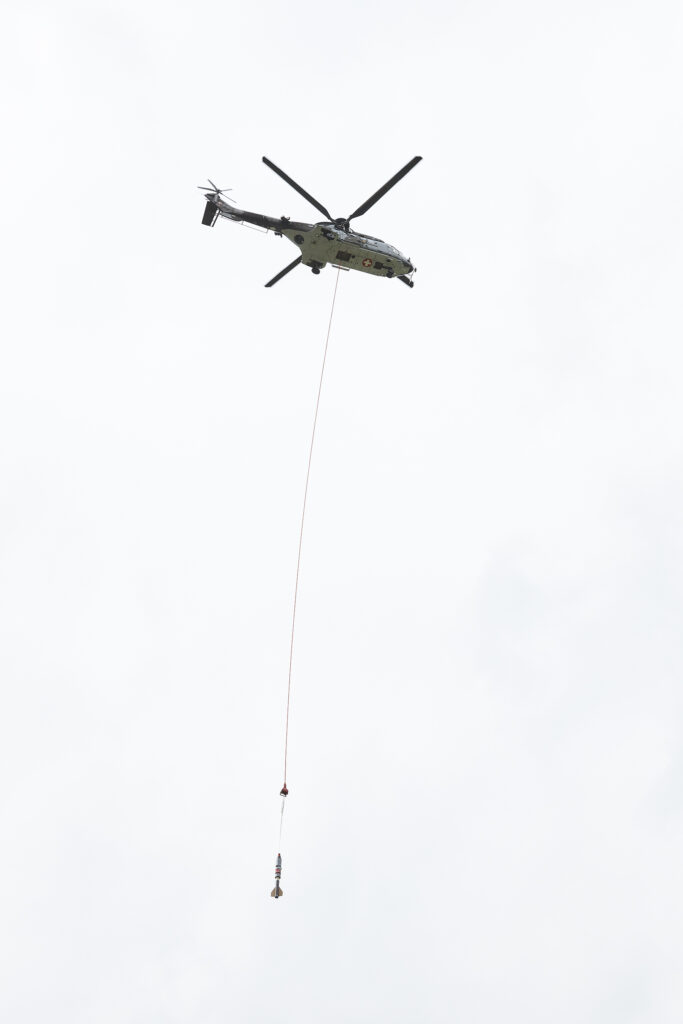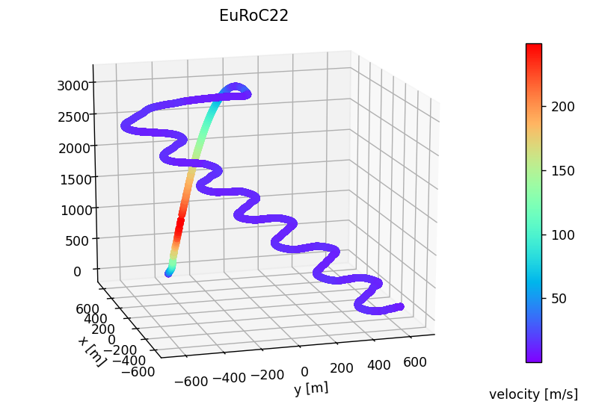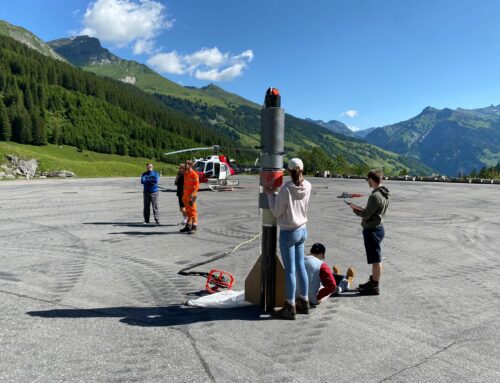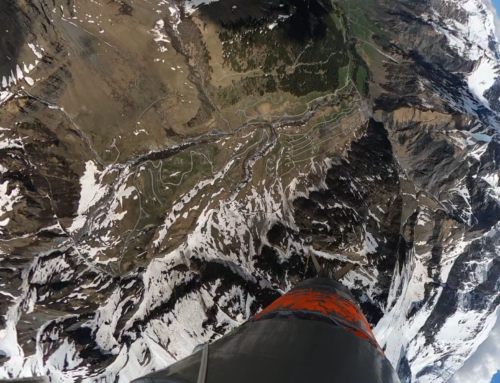Over the last year team PERIPHAS has developed a guided recovery system for rockets. Using a ram-air parachute, which is the same one you would see a skydiver use, the system can be steered during descent by two motors inside the system. The motors are actuated by a completely self-developed software running on electronics designed by the team.
Droptest Campaign
Over the summer of 2022 the system was subjected to seven droptests in the Swiss mountains. A test where the system can go through the entire recovery phase of a rocket launch without performing a launch. The system was hooked up to a helicopter of the Swiss Air Force and subsequently dropped from more than 1000 m above ground.
During the seven droptest the team was able to – with a few setbacks – develop an autonomously flying system. This achievement can’t be understated as it is a first in student rocketry, and the amount of software development that went into it was considerable. We were finally able to steer a rocket during descent, and it could follow heading references with ease.
Maiden Launch

With the milestone of guided descent behind us the team focused on achieving the next goal that we set out at the start of the project. We wanted to actually fly the system in a rocket and test it during a rocket launch.
The necessary team and structures around building such a rocket – and not just a recovery system – were assembled months in advance. After the necessary preparations a rocket launch to 1100 m was approved in Switzerland where we had previously conducted our droptests.
And so on August 13th PERIPHAS took center stage in the Swiss Alps and ignited its engine. But around 1 second after leaving the launch rail the rocket tilted hard to the left and flew off at around a 60-degree angle from the ground. The system crashed into the mountainside, and we were not able to demonstrate our guided recovery system to the many attendants at our launch.
Hard work of almost 12 months had been destroyed in a matter of seconds, this was a low point for the team. Something had gone wrong during ascent, and we needed figure it out, since just under two months later we needed to launch again. This time at the European Rocketry Challenge in Portugal. A competition organised by the Portuguese Space Agency.
European Rocketry Challenge 2022 (EuRoC)

The issue at maiden launch was traced back to a critically low velocity at the moment the rocket left the launch rail. This issue was mitigated as we had a more powerful engine for EuRoC. The goal was to fly to 3000 m apogee, using the already established airbrake system from the 2020 EULER rocket. This system extends aluminium scoops outwards from the rocket’s hull to slow it down during ascent and target a precise apogee.
The team arrived with a rebuilt rocket and high spirits and settled into EuRoC. Tackling different challenges like the Flight Readiness Review and a Jury Pitch during the first two days. During these reviews the safety and readiness of our system as well as the overall philosophy behind our project was scrutinised. We passed with flying colours!
We intended to launch on the third day of EuRoC, which was the first possible launch day. Unfortunately, due to some issues with our electronics we had to move our launch back by one day. The issues that encountered were fixed and we woke up on Friday the 14th of October ready to tackle the final launch of PERIPHAS.

The day began at 5:30 AM so that we had enough time to get to the launch site located at a military shooting range just under an hour away. We were the first ones there, while it was still dark we were unloading our van into our assembly tent.
The assembly of the rocket took the entire morning. It went smoothly and no major problems occurred. With 30 minutes left until our launch window opened it was time to move the rocket to the launch rail and mount it, so that it would be ready for launch.
The rocket was erected, the igniter was inserted and final GOs were given for launch. Nerves built up as it was counted down over the PA-system “3, 2, 1…IGNITION”. And she there she went! With just below the speed of sound PERIPHAS ascended to 2970 m, deployed its parachute, and went on to demonstrate guided descent in front of many excited onlookers from all over Europe. You can see the flight path recovered from our data in the graph below.


It was a truly amazing moment for PERIPHAS and ARIS, as we were able to demonstrate a new degree of technical excellence.
The team wants to thank ARIS and all its supporters for making this project possible. We hope that the technical legacy of PERIPHAS will live on!








Social Contact